References
In writing this book we are exploring eating wild plants — some of which have poisonous look-alikes or poisonous parts — not to mention using them for medicine. So we really wanted to get our facts right — not just repeat things we’d heard somewhere or the other. That meant reading hundreds of research papers, book chapters, medical texts and historical documents. They aren’t all represented here, but the ones which back up particular assertions in the book are. If you want to read the papers, you can find most by searching for the titles on scholar.google.com. (Most ask for payment to read though, unless you’re lucky enough to belong to a university. See this resource of free journals.) The references are broken into sections and in order of their use in the book, so keen fact hunters can match an assertion with a reference, but feel free to ask us if you need help. 🙂
1. Introduction
On the Appreciation of Weeds
Thomas J. Monaco, Stephen C. Weller, and Floyd M. Ashton, Weed Science: Principles and Practices, 4th ed. (New York: John Wiley & Sons Inc., 2002).
John Dwyer, “Weed Psychology and the War on Weeds,” Plant Protection Quarterly 26, no. 3 (September 2011): 82-86. [we recommend this, and hope John publishes his broader PhD as a book in the near future.]
Eduardo H. Rapoport et al., “Edible Weeds: A Scarcely Used Resource,” Bulletin of the Ecological Society of America 76, no. 3 (1995): 163-166. http://www.jstor.org/pss/20167947
S. Redzic, A. Biscevic, and A. Redzic, “Use Of Edible Mushrooms and Lichens in Additional Nutrition of People in War in Bosnia And Herzegovina (W. Balkan)” (presented at the The World Congress on Medicinal and Aromatic Plants, Cape Town, 2008).
Artemis P Simopoulos, “Omega-3 Fatty Acids and Antioxidants in Edible Wild Plants,” Biological Research 37 (2004): 263-277.
Ertan Yildirim, Atilla Dursun, and Metin Turan, “Determination of the Nutrition Contents of the Wild Plants Used as Vegetables in Upper Çoruh Valley,” Turkish Journal of Botany 25 (2001): 367-371.
“Understanding local Mediterranean diets: A multidisciplinary pharmacological and ethnobotanical approach,” Pharmacological Research 52, no. 4 (October 2005): 353-366.
Notes of Caution
(Note: there are further references in our extended online oxalic acid article.)
Mahmut Çalişkan, “The Metabolism of Oxalic Acid,” Journal of Zoology 24 (2000): 103–106.
José Luis Guil et al., “Oxalic Acid and Calcium Determination in Wild Edible Plants,” J. Agric. Food Chem. 44, no. 7 (1996): 1821-1823.
Shashi Kala Yadav and Salil Sehgal, “Effect of domestic processing and cooking on selected antinutrient contents of some green leafy vegetables,” Plant Foods for Human Nutrition (Formerly Qualitas Plantarum) 58, no. 3 (September 1, 2003): 1-11.
Shepherd, R.C.H. 2010. Is This Plant Poisonous?: An Australian Field Guide for Livestock, Pets and People. Richardson, R G & F J.
Kallas, J. 2010. Edible Wild Plants: Wild Foods From Dirt to Plate. Gibbs Smith.
Hord, N. G. 2011. “Regulation of Dietary Nitrate and Nitrite: Balancing Essential Physiological Roles with Potential Health Risks.” Nitrite and Nitrate in Human Health and Disease: 155–166.
Bryan, Nathan S., and Joseph Loscalzo. 2011. Nitrite and Nitrate in Human Health and Disease. Springer.
D. Stankovic and Lj. Dosenovic, “Herbaceous plants as lead (Pb) hyperaccumulators” (presented at the International Scientific Conference Integral Protection of Forests – Scientific-Technological Platform, Belgrade (Serbia): Institute of Forestry, Belgrade (Serbia), 2007).
2. Our Top 20 Edible and Medicinal Weeds
Sheik Saeed Ahmad and Sumaira Javed, “Exploring the Economic value of Underutilized Plant species in Ayubia National Park,” Pak. J. Bot. 39, no. 5 (2007): 1435-1442.
Amaranth (Amaranthus species)
We’ll publish the spreadsheet we used to calculate the USDA nutritional database rankings soon!
Teutonico, Rita A., and Dietrich Knorr. 1985. “Amaranth: Composition, Properties and Applications.” Food Techonology 39 (4): 49–61.
Jonathan B. Tucker, “Amaranth: The Once and Future Crop,” BioScience 36, no. 1 (January 1, 1986): 9-13.
McConnell, K. 1998. “The Prehistoric Use of Chenopodiaceae in Australia: Evidence from Carpenter’s Gap Shelter 1 in the Kimberley, Australia.” Vegetation History and Archaeobotany 7 (3): 179–188.
Teutonico (1985)
Angled onion (Allium triquetrum)
Yu-Yan Yeh and Lijuan Liu, “Cholesterol-Lowering Effect of Garlic Extracts and Organosulfur Compounds: Human and Animal Studies,” The Journal of Nutrition 131, no. 3 (2001): 989S-993S.
MA Adetumbi, “Allium sativum (garlic)–a natural antibiotic,” Med Hypothesis 12, no. 3 (1983): 227-237.
Blackberry (Rubus fruticosus and relatives)
Bente L Halvorsen et al., “Content of redox-active compounds (ie, antioxidants) in foods consumed in the United States,” The American Journal of Clinical Nutrition 84, no. 1 (2006): 95-135.
Adelheid Brantner and Edith Grein, “Antibacterial activity of plant extracts used externally in traditional medicine,” Journal of Ethnopharmacology 44, no. 1 (August 1994): 35-40.
J. M Edmonds, J. A. Chweya, and International Plant Genetic Resources Institute, Black nightshades, Solanum nigrum L. and related species (IPGRI, 1997)
Blackberry Nightshade (Solanum nigrum)
“Vienna Dioscorides,” University of Virginia Health System Historical Collections, n.d., http://www.hsl.virginia.edu/historical/rare_books/herbalism/vienna.cfm.
V. Prashanth Kumar et al., “Cytoprotective role of Solanum nigrum against gentamicin-induced kidney cell (Vero cells) damage in vitro,” Fitoterapia 72, no. 5 (June 2001): 481-486.
Jainu, Mallika, and Chennam Srinivasulu Shyamala Devi. 2006. “Antiulcerogenic and Ulcer Healing Effects of Solanum Nigrum (L.) on Experimental Ulcer Models: Possible Mechanism for the Inhibition of Acid Formation.” Journal of Ethnopharmacology 104 (1-2) (March 8): 156–163. doi:10.1016/j.jep.2005.08.064.
IKEDA T. et al., Anti-herpes virus activity of Solanum steroidal glycosides, vol. 23, Biological & pharmaceutical bulletin (Tokyo, JAPON: Pharmaceutical Society of Japan, 2000).
Pat Collins, Useful Weeds At Our Doorstep (Total Health & Education Centre, 1998).
Jian Li et al., “Aqueous extract of Solanum nigrum inhibit growth of cervical carcinoma (U14) via modulating immune response of tumor bearing mice and inducing apoptosis of tumor cells,” Fitoterapia 79, no. 7-8 (December 2008): 548-556.
Kuppuswamy Raju et al., “Effect of Dried Fruits of Solanum nigrum LINN against CCl4-Induced Hepatic Damage in Rats,” Biological & Pharmaceutical Bulletin 26, no. 11 (2003): 1618-1619.
Hui-Mei Lin et al., “Hepatoprotective effects of Solanum nigrum Linn extract against CCl4-iduced oxidative damage in rats,” Chemico-Biological Interactions 171, no. 3 (February 15, 2008): 283-293.
V. Prashanth Kumar et al., “Cytoprotective role of Solanum nigrum against gentamicin-induced kidney cell (Vero cells) damage in vitro,” Fitoterapia 72, no. 5 (June 2001): 481-486.
Mallika Jainu and Chennam Srinivasulu Shyamala Devi, “Antiulcerogenic and ulcer healing effects of Solanum nigrum (L.) on experimental ulcer models: Possible mechanism for the inhibition of acid formation,” Journal of Ethnopharmacology 104, no. 1-2 (March 8, 2006): 156-163.
Thayer, Samuel. “Black Nightshade.” Forager’s Harvest. http://foragersharvest.com/black-nightshade-2/.
Eunice A. Olet, Manfred Heun, and Kåre A. Lye, “African crop or poisonous nightshade; the enigma of poisonous or edible black nightshade solved,” African Journal of Ecology 43, no. 2 (2005): 158-161.
Note: the authors seem to be working from the assumption that the European variants of Solanum nigrum are “highly poisonous” whereas many related species or subspecies in Africa are not, however there is no reference to back the toxicity claim.
Martin L. Cipollini and Douglas J. Levey, “Why are some fruits toxic? Glycoalkaloids in Solanum and fruit choice by vertebrates,” Ecology 78, no. 3 (1997): 782-798.
Wyk, Ben-Erik Van, and Nigel Gericke. 2000. People’s Plants: a Guide to Useful Plants of Southern Africa. Briza.
Chickweed (Stellaria media)
J.L. Guil Guerrero, J.J. Giménez Martı́nez, and M.E. Torija Isasa, “Mineral Nutrient Composition of Edible Wild Plants,” Journal of Food Composition and Analysis 11, no. 4 (December 1998): 322-328.
Artemis P. Simopoulos, “Omega-3 Fatty Acids and Antioxidants in Edible Wild Plants,” Biological Research 37 (2004): 263-277.
G. T. Prance and M. Nesbitt, The Cultural history of plants (Routledge, 2005).
Cathy Sears, “How to survive the world’s worst diet,” New Scientist, February 18, 1995.
D. E. Allen and G. Hatfield, Medicinal plants in folk tradition: an ethnobotany of Britain & Ireland (Timber Press, 2004).
David Hoffmann, Medical herbalism: the science and practice of herbal medicine (Healing Arts Press, 2003).
Cleavers (Galium aparine)
Doris Hexsel, Cecilia Orlandi, and Debora Zechmeister do Prado, “Botanical Extracts Used in the Treatment of Cellulite,” Dermatologic Surgery 31 (2005): 866-873.
Margaret Grieve, A Modern Herbal (Botanical.com, 1995 (first published 1931)), http://www.botanical.com/botanical/mgmh/c/cliver74.html.
Cleavers also contains a substance known as asperuloside which has been associated with anti-obesity qualities. See: Ken Fern, “Galium aparine Goosegrass,” PFAF Plant Database, n.d., http://www.pfaf.org/user/Plant.aspx?LatinName=Galium+aparine and T. Hirata et al., “Anti-obesity compounds in green leaves of Eucommia ulmoides,” Bioorganic & Medicinal Chemistry Letters 21, no. 6 (March 15, 2011): 1786-1791.
Ken Fern, “Galium aparine Goosegrass,” PFAF Plant Database, n.d., http://www.pfaf.org/user/Plant.aspx?LatinName=Galium+aparine.
Dandelion (Taraxacum officinale)
“USDA National Nutrient Database for Standard Reference,” USDA Nutrient Data Laboratory, n.d., http://www.nal.usda.gov/fnic/foodcomp/search/.
Chaoyang Li et al., “Serum {alpha}-Carotene Concentrations and Risk of Death Among US Adults: The Third National Health and Nutrition Examination Survey Follow-up Study,” Arch Intern Med 171, no. 6 (2011): 507-515.
Katrin Schütz, Reinhold Carle, and Andreas Schieber, “Taraxacum—A review on its phytochemical and pharmacological profile,” Journal of Ethnopharmacology 107, no. 3 (October 11, 2006): 313-323.
Sophia C Sigstedt et al., “Evaluation of aqueous extracts of Taraxacum officinale on growth and invasion of breast and prostate cancer cells.,” International Journal of Oncology 32, no. 5 (2008): 1085–1090.
S. J Chatterjee et al., “The Efficacy of Dandelion Root Extract in Inducing Apoptosis in Drug-Resistant Human Melanoma Cells,” Evidence-Based Complementary and Alternative Medicine 2011 (2011), http://dx.doi.org/10.1155/2011/129045.
P. Ovadje et al., “Selective induction of apoptosis through activation of caspase-8 in human leukemia cells (Jurkat) by dandelion root extract,” Journal of Ethnopharmacology 133, no. 1 (January 7, 2011): 86-91.
Chan, Gill Young, and Hee Jung Kim. 2011. “Antimicrobial Effects of Extracts of Taraxacum Officinale H. on Acnes Strains”. 국제통합대체의학회지. http://www.papersearch.net/view/detail.asp?detail_key=1r200072.
Fat Hen (Chenopodium album)
“USDA National Nutrient Database for Standard Reference,” USDA Nutrient Data Laboratory, n.d., http://www.nal.usda.gov/fnic/foodcomp/search/.
S Kumar and D Kumar, “Antioxidant and free radical scavenging activities of edible weeds,” African Journal of Food, Agriculture, Nutrition and Development 9, no. 5 (2009): 1174-1190.
Shashi Kala Yadav and Salil Sehgal, “Effect of domestic processing and cooking on selected antinutrient contents of some green leafy vegetables,” Plant Foods for Human Nutrition (Formerly Qualitas Plantarum) 58, no. 3 (September 1, 2003): 1-11.
C. C Baskin and J. M Baskin, Seeds: ecology, biogeography, and evolution of dormancy and germination (Academic Press, 2000), p 145
Paraskev Nedialkov, Stefan Nikolov, and Zlatina Kokanova-Nedialkova, “The genus chenopodium: Phytochemistry, ethnopharmacology and pharmacology,” Phcog Rev 3 (2009): 280-306.
“The Truth about Melbourne,” The Age, September 6, 1965.
Fennel (Foeniculum vulgare)
“Full text of ‘The School of Salernum = Regimen Sanitatis Salernitanum’,” archive.org, http://www.archive.org/stream/schoolofsalernum00regiuoft/schoolofsalernum00regiuoft_djvu.txt.
Medical Economics Company, PDR for herbal medicines (Medical Economics Company, 2000).
Francesco Savino et al., “A randomized double-blind placebo-controlled trial of a standardized extract of Matricariae recutita, Foeniculum vulgare and Melissa officinalis (ColiMil®) in the treatment of breastfed colicky infants,” Phytotherapy Research 19, no. 4 (2005): 335-340.
Gurdip Singh et al., “Chemical constituents, antifungal and antioxidative potential of Foeniculum vulgare volatile oil and its acetone extract,” Food Control 17, no. 9 (September 2006): 745-752.
Mallow (Malva species)
James Duke, “Dr. Duke’s Phytochemical and Ethnobotanical Databases”, n.d., http://www.ars-grin.gov/duke/.
Horace, “‘The Odes’ Book I,” trans. A.S. Kline, 30 BC (translation 2003), http://www.poetryintranslation.com/PITBR/Latin/HoraceOdesBkI.htm.
Larry W. Mitich, “Cheeseweed: The Common Mallows,” Weed Technology 4, no. 3 (1990): 693-695.
CL Quave, A Pierone, and BC Bennett, “Dermatological remedies in the traditional pharmacopoeia of Vulture-Alto Bradano, inland southern Italy,” J Ethnobiol Ethnomed. 4, no. 5 (2008).
Dioscorides Pedanius, The Greek herbal of Dioscorides, ed. R. T Gunther, trans. John Goodyer (Hafner Publishing Co., 1933).
João Cleverson Gasparetto et al., “Ethnobotanical and scientific aspects of Malva sylvestris L.: a millennial herbal medicine,” Journal of Pharmacy and Pharmacology 64, no. 2 (2012): 172-189.
F. J Richardson, R. G Richardson, and R. C Shepherd, Weeds of the South-East: An Identification Guide for Australia, 2nd ed. (R.G. and F.J. Richardson, 2011).
Nasturtium (Tropaeolum majus)
David Bruce Leonard, “Medicine at your Feet: Healing Plants of the Hawaiian Kingdom Tropaeolum majus (Pohe Haole)” (Roast Duck Producktion, 2006).
Chevallier, A. 1996. Encyclopedia of herbal medicine. DK Pub. p. 276
Butnariu, Monica, and Cristian Bostan. 2011. “Antimicrobial and anti-inflammatory activities of the volatile oil compounds from Tropaeolum majus L. (Nasturtium).” African Journal of Biotechnology 10 (31): 5900-5909.
Duke, J. A, M. J Bogenschutz-Godwin, and A. R Ottesen. 2008. Duke’s handbook of medicinal plants of Latin America. Taylor & Francis.
Yang, Yang-Ming, C. Clifford Conaway, J. W. Chiao, Chung-Xiou Wang, Shantu Amin, John Whysner, Wei Dai, Joel Reinhardt, and Fung-Lung Chung. 2002. “Inhibition of Benzo(a)pyrene-induced Lung Tumorigenesis in A/J Mice by Dietary N-Acetylcysteine Conjugates of Benzyl and Phenethyl Isothiocyanates during the Postinitiation Phase Is Associated with Activation of Mitogen-activated Protein Kinases and p53 Activity and Induction of Apoptosis.” Cancer Research 62 (1) (January 1): 2 -7
Kim, Eun, Ji Hong, Soon Eom, Jae-Yong Lee, and Jung Park. 2011. “Oral administration of benzyl-isothiocyanate inhibits solid tumor growth and lung metastasis of 4T1 murine mammary carcinoma cells in BALB/c mice.” Breast Cancer Research and Treatment 130 (1) (November 1): 61-71. doi:10.1007/s10549-010-1299-8.
Niizu, P.Y., and Delia B. Rodriguez-Amaya. 2005. “Flowers and Leaves of Tropaeolum majus L. as Rich Sources of Lutein.” Journal of Food Science 70 (9): S605-S609. doi:10.1111/j.1365-2621.2005.tb08336.x.
Gasparotto Junior, Arquimedes, Marcos Aurelio Boffo, Emerson Luiz Botelho Lourenço, Maria Elida Alves Stefanello, Cândida Aparecida Leite Kassuya, and Maria Consuelo Andrade Marques. 2009. “Natriuretic and diuretic effects of Tropaeolum majus (Tropaeolaceae) in rats.” Journal of Ethnopharmacology 122 (3) (April 21): 517-522. doi:10.1016/j.jep.2009.01.021.
Gasparotto Junior, Arquimedes, Francielly Mourão Gasparotto, Emerson Luiz Botelho Lourenço, Sandra Crestani, Maria Elida Alves Stefanello, Marcos José Salvador, José Eduardo da Silva-Santos, Maria Consuelo Andrade Marques, and Cândida Aparecida Leite Kassuya. 2011. “Antihypertensive effects of isoquercitrin and extracts from Tropaeolum majus L.: Evidence for the inhibition of angiotensin converting enzyme.” Journal of Ethnopharmacology 134 (2) (March 24): 363-372. doi:10.1016/j.jep.2010.12.026.
Albrecht, Uwe, Karl-Heinz Goos, and Berthold Schneider. 2007. “A randomised, double-blind, placebo-controlled trial of a herbal medicinal product containing Tropaeoli majoris herba (Nasturtium) and Armoraciae rusticanae radix (Horseradish) for the prophylactic treatment of patients with chronically recurrent lower urinary tract infections.” Curr Med Res Opin 23 (10): 2415-2422. doi:10.1185/030079907X233089.
Pieroni, A., V. Janiak, C. M. Dürr, S. Lüdeke, E. Trachsel, and M. Heinrich. 2002. “In Vitro Antioxidant Activity of Non-cultivated Vegetables of Ethnic Albanians in Southern Italy.” Phytotherapy Research 16 (5): 467–473. doi:10.1002/ptr.1243.
Nettle (Urtica urens)
Afolayan, A. J., and F. O. Jimoh. 2008. “Nutritional Quality of Some Wild Leafy Vegetables in South Africa.” International Journal of Food Sciences and Nutrition 60 (5): 424–431. doi:10.1080/09637480701777928.
Watts, Donald. 2007. Dictionary of Plant Lore. Elsevier/AP.
Mitich, Larry W. 1994. “The Nettles.” Weed Technology 6 (4): 1039–1041.
Grieve, Margaret. 1995. A Modern Herbal. Botanical.com. http://www.botanical.com. (first published 1931)
Kavalali, G. M. 2003. Urtica: Therapeutic and Nutritional Aspects of Stinging Nettles. Taylor & Francis.
Randall, C., H. Randall, F. Dobbs, C. Hutton, and H. Sanders. 2000. “Randomized Controlled Trial of Nettle Sting for Treatment of Base-of-thumb Pain.” Journal of the Royal Society of Medicine 93 (6): 305–309.
Alford, L. 2007. “The Use of Nettle Stings for Pain.” Altern Ther Health Med. 13 (6): 58.
Safarinejad, M. R. 2005. “Urtica Dioica for Treatment of Benign Prostatic Hyperplasia.” Journal of Herbal Pharmacotherapy 5 (4): 1–11.
UMMC. “Stinging Nettle.” University of Maryland Medical Center. http://www.umm.edu/altmed/articles/stinging-nettle-000275.htm.
Mittman, Paul. 2007. “Randomized, Double-Blind Study of Freeze-Dried Urtica Dioica in the Treatment of Allergic Rhinitis.” Planta Medica 56 (01) (January 5): 44–47. doi:10.1055/s-2006-960881.
Clark, F. P. 1993. “Tree Nettle (Urtica Ferox) Poisoning.” New Zealand Medical Journal 106: 234–234.
Oxalis (Oxalis spp.)
Badwaik, Hemant, Mukesh Singh, Deepa Thakur, Tapan Giri, and D. Tripathi. 2011. “The Botany, Chemistry, Pharmacological and Therapeutic Application of Oxalis Corniculata Linn– A Review.” International Journal of Phytomedicine 3 (1). http://www.arjournals.org/index.php/ijpm/article/view/268.
Grieve, Margaret. 1995. A Modern Herbal. Botanical.com. http://www.botanical.com/botanical/mgmh/c/cliver74.html.
Badwaik, Hemant, Mukesh Singh, Deepa Thakur, Tapan Giri, and D. Tripathi. 2011. “The Botany, Chemistry, Pharmacological and Therapeutic Application of Oxalis Corniculata Linn– A Review.” International Journal of Phytomedicine 3 (1). http://www.arjournals.org/index.php/ijpm/article/view/268.
Handali, Somayeh, and Hyam Hosseini. 2011. “Formulation and evaluation of an antibacterial cream from Oxalis corniculata aqueous extract.” Jundishapur Journal of Microbiology 4 (4): 255-260.
Sharangouda, K, and SB Patil. 2007. “Antiimplantation and abortifacient activities of Oxalis corniculata in albino rats.” Nigerian Journal of Natural Products and Medicine 11: 58-60.
Plantain (Plantago spp.)
Nine Herbs Charm. Wikipedia, the free encyclopedia. http://en.wikipedia.org/wiki/Nine_Herbs_Charm.
Beechy, T. 2010. The poetics of old English. Ashgate. p.111-114. http://books.google.com.au/books?id=r-s-KYmoehgC.
Allen, D. E, and G. Hatfield. 2004. Medicinal plants in folk tradition: an ethnobotany of Britain & Ireland. Timber Press. P. 190
Company, Medical Economics. 2000. PDR for herbal medicines 2nd Edition. Medical Economics Company.
Anne Berit, Samuelsen. 2000. “The traditional uses, chemical constituents and biological activities of Plantago major L. A review.” Journal of Ethnopharmacology 71 (1–2) (July): 1-21. doi:10.1016/S0378-8741(00)00212-9.
Krasnov, M., V. Yamskova, D. Margasyuk, O. Kulikova, A. Il’ina, E. Rybakova, and I. Yamskov. 2011. “Study of a new group of bioregulators isolated from the greater plantain (Plantago major L.).” Applied Biochemistry and Microbiology 47 (2) (March 1): 128-135. doi:10.1134/S0003683811020086.
Vaughan, Karen. 2009. Plantain, And How to Make A Spit Poultice. Acupuncture and Herbs. August 18. http://www.acupuncturebrooklyn.com/articles-by-karen-vaughan/plantain-and-how-to-make-a-spit-poultice.
Gomez-Flores, R., C. L. Calderon, L. W. Scheibel, P. Tamez-Guerra, C. Rodriguez-Padilla, R. Tamez-Guerra, and R. J. Weber. 2000. “Immunoenhancing properties of Plantago major leaf extract.” Phytotherapy Research 14 (8): 617-622. doi:10.1002/1099-1573(200012)14:8<617::AID-PTR674>3.0.CO;2-N.
Atta, Attia H., and Samar M. Mouneir. 2005. “Evaluation of some medicinal plant extracts for antidiarrhoeal activity.” Phytotherapy Research 19 (6): 481-485. doi:10.1002/ptr.1639.
Yeşilada, Erdem, Ekrem Sezik, Tetsuro Fujita, Shigeo Tanaka, and Mamoru Tabata. 1993. “Screening of some Turkish medicinal plants for their antiulcerogenic activities.” Phytotherapy Research 7 (3): 263-265. doi:10.1002/ptr.2650070313.
Mao-ye, Wang, and An Li-guo. 2001. “Effects of Plantago major L. seeds extract on endurance exercise capacity in mice.” J. Med. Plants Res. 5 (9): 1659-1663.
Bottema, S., G. Entjes-Nieborg, W. Zeist, International Union for Quaternary Research, and Rijksuniversiteit te Groningen. Biologisch-Archeologisch Instituut. 1990. Man’s role in the shaping of the eastern Mediterranean landscape: proceedings of the INQUA/BAI Symposium on the Impact of Ancient Man on the Landscape of the Eastern Mediterranean Region and the Near East, Groningen, Netherlands, 6-9 March 1989. A.A. Balkema. http://books.google.com.au/books?id=jPY5pbh8cTUC
Prickly Pear (Opuntia ficus-indica)
Rodriguez-Fragoso, Lourdes, Jorge Reyes-Esparza, Scott W. Burchiel, Dea Herrera-Ruiz, and Eliseo Torres. 2008. “Risks and Benefits of Commonly Used Herbal Medicines in Mexico.” Toxicology and Applied Pharmacology 227 (1) (February 15): 125–135. doi:10.1016/j.taap.2007.10.005
Purslane (Portulaca oleracea)
A P Simopoulos et al., “Common purslane: a source of omega-3 fatty acids and antioxidants,” Journal of the American College of Nutrition 11, no. 4 (August 1992): 374-382.
Artemis P Simopoulos, “Omega-3 Fatty Acids and Antioxidants in Edible Wild Plants,” Biological Research 37 (2004): 263-277.
Mohamed, Ali I., and Ahmed S. Hussein. 1994. “Chemical Composition of Purslane (Portulaca Oleracea).” Plant Foods for Human Nutrition (Formerly Qualitas Plantarum) 45 (1) (January 1): 1–9. doi:10.1007/BF01091224.
Liu, Lixia, Peter Howe, Ye-Fang Zhou, Zhi-Qiang Xu, Charles Hocart, and Ren Zhang. 2000. “Fatty Acids and Β-carotene in Australian Purslane (Portulaca Oleracea) Varieties.” Journal of Chromatography A 893 (1) (September 29): 207–213. doi:10.1016/S0021-9673(00)00747-0.
Gorske, S. F., A. M. Rhodes, and H. J. Hopen. 1979. “A Numerical Taxonomic Study of Portulaca oleracea.” Weed Science 27 (1) (January 1): 96-102.
Byrne, Roger, and J. H. McAndrews. 1975. “Pre-Columbian Purslane (Portulaca Oleracea L) in the New World.” Nature 253 (5494) (February 27): 726–727. doi:10.1038/253726a0.
Chapman, Jefferson, Robert Stewart, and Richard Yarnell. 1973. “Archaeological Evidence for Precolumbian Introduction of Portulaca Oleracea and Mollugo Verticillata into Eastern North America.” Economic Botany 28 (4) (October 1): 411–412. doi:10.1007/BF02862857.
Smyth, Robert B. 1878. The Aborigines of Victoria. J. Ferres, gov’t printer. http://openlibrary.org/books/OL22877095M/The_aborigines_of_Victoria_with_notes_relating_to_the_habits_of_the_natives_of_other_parts_of_Australia_and_Tasmania.
Pain, Stephanie. 1988. “The Healthiest Restaurant in Australia.” New Scientist, August 12.
Maiden, Joseph Henry. 1889. The Useful Native Plants of Australia, (Including Tasmania). The Technological Museum of New South Wales. http://www.archive.org/stream/usefulnativeplan1889maid/usefulnativeplan1889maid_djvu.txt.
Rashed, A.N, F.U Afifi, and A.M Disi. 2003. “Simple Evaluation of the Wound Healing Activity of a Crude Extract of Portulaca Oleracea L. (growing in Jordan) in Mus Musculus JVI-1.” Journal of Ethnopharmacology 88 (2–3): 131 – 136. doi:10.1016/S0378-8741(03)00194-6.
Chan, K., M.W Islam, M. Kamil, R. Radhakrishnan, M.N.M Zakaria, M. Habibullah, and A. Attas. 2000. “The Analgesic and Anti-inflammatory Effects of Portulaca Oleracea L. Subsp. Sativa (Haw.) Celak.” Journal of Ethnopharmacology 73 (3): 445 – 451. doi:10.1016/S0378-8741(00)00318-4.
Collins, Pat. 1998. Useful Weeds At Our Doorstep. Total Health & Education Centre.
Lucas, Michel, Fariba Mirzaei, Eilis J O’Reilly, An Pan, Walter C Willett, Ichiro Kawachi, Karestan Koenen, and Alberto Ascherio. 2011. “Dietary Intake of N−3 and N−6 Fatty Acids and the Risk of Clinical Depression in Women: a 10-y Prospective Follow-up Study.” The American Journal of Clinical Nutrition 93 (6): 1337–1343.
Yehuda, Shlomo, Sharon Rabinovitz, and David I. Mostofsky. 2005. “Mixture of Essential Fatty Acids Lowers Test Anxiety.” Nutritional Neuroscience 8 (4): 265–267.
Salsify (Tragopogon porrifolius)
Formisano, Carmen, Daniela Rigano, Felice Senatore, Maurizio Bruno, and Sergio Rosselli. 2010. “Volatile Constituents of the Aerial Parts of White Salsify (Tragopogon Porrifolius L., Asteraceae).” Natural Product Research 24 (7): 663–668. doi:10.1080/14786410903172106.
Dembinski, Michael. 2007. “Giant Dandelion Clocks.” W-wa Jeziorki. http://jeziorki.blogspot.com.au/2007/06/giant-dandelion-clocks_09.html.
Sow Thistle (Sonchus oleraceus)
Gardenology.org contributors. “Glossary of Botanical Names.” Gardenology.org – Plant Encyclopedia and Gardening Wiki. http://www.gardenology.org/wiki/Glossary_of_Botanical_Names#O.
S Zeghichi et al., “Nutritional Composition of Selected Wild Plants in the Diet of Crete,” in Plants in human health and nutrition policy, ed. A. P Simopoulos and C. Gopalan (Karger, 2003).
Vilela, Fabiana C., Andressa D. Bitencourt, Layla D.M. Cabral, Lidiane S. Franqui, Roseli Soncini, and Alexandre Giusti-Paiva. 2010. “Anti-inflammatory and Antipyretic Effects of Sonchus Oleraceus in Rats.” Journal of Ethnopharmacology 127 (3) (February 17): 737–741. doi:10.1016/j.jep.2009.11.030.
Mitich, L. W. 1988. “Thistles. II. Sonchus and Centaurea.” Weed Technology : a Journal of the Weed Science Society of America v. 2(3) p. 380-381 (July). http://agris.fao.org/agris-search/search/display.do?f=1989/US/US89329.xml;US8923488.
Culpeper, Nicholas. 1652. The English Physitian. Printed by Peter Cole, at the sign of the Printing-Press in Cornhil, near the Royal Exchange.
Mike Sutton, “The Spinach, Popeye, Iron, Decimal Error Myth is Finally Busted,” BestThinking, December 15, 2010, http://www.bestthinking.com/articles/science/chemistry/biochemistry/the-spinach-popeye-iron-decimal-error-myth-is-finally-busted.
José Luis Guil-Guerrero et al., “Nutritional composition of Sonchus species (S asperL, S oleraceusL and S tenerrimusL),” Journal of the Science of Food and Agriculture 76, no. 4 (1998): 628-632.
“USDA National Nutrient Database for Standard Reference,” USDA Nutrient Data Laboratory, n.d., http://www.nal.usda.gov/fnic/foodcomp/search/.
Yorta Yorta Clans Group. 2003. Management Plan for Yorta Yorta Cultural Environmental Heritage Project: Final Report. Yorta Yorta Clans Group Inc.
Gott, Beth. 2008. “Indigenous Use of Plants in South-eastern Australia.” Telopea 12 (2): 215–226.
Gott, Beth, and J.H. Willis. 1986. “Could Sow-Thistles Be Native? A Re-appraisal”. Unpublished.
Smyth, Robert B. 1878. The Aborigines of Victoria. J. Ferres, gov’t printer. http://openlibrary.org/books/OL22877095M/The_aborigines_of_Victoria_with_notes_relating_to_the_habits_of_the_natives_of_other_parts_of_Australia_and_Tasmania.
Wild Brassicas (Brassica species)
Kumar, S., and A. Andy. 2012. “Health Promoting Bioactive Phytochemicals from Brassica.” International Food Research Journal 19.
Keck, Anna-Sigrid, and John W Finley. 2004. “Cruciferous Vegetables: Cancer Protective Mechanisms of Glucosinolate Hydrolysis Products and Selenium.” Integrative Cancer Therapies 3 (1) (March 1): 5–12. doi:10.1177/1534735403261831.
Hoffmann, David. 2003. Medical Herbalism: The Science and Practice of Herbal Medicine. Healing Arts Press.
Kristal, Alan R., and Johanna W. Lampe. 2002. “Brassica Vegetables and Prostate Cancer Risk: A Review of the Epidemiological Evidence.” Nutrition and Cancer 42 (1): 1–9. doi:10.1207/S15327914NC421_1.
Kataya, Hazem A. H., and AlaaEldin A. Hamza. 2008. “Red Cabbage (Brassica Oleracea) Ameliorates Diabetic Nephropathy in Rats.” eCAM 5 (3): 281–587.
Yadav, S.P, V Vats, A.C Ammini, and J.K Grover. 2004. “Brassica Juncea (Rai) Significantly Prevented the Development of Insulin Resistance in Rats Fed Fructose-enriched Diet.” Journal of Ethnopharmacology 93 (1) (July): 113–116. doi:10.1016/j.jep.2004.03.034.
Xue, Mingzhan, Qingwen Qian, Antonysunil Adaikalakoteswari, Naila Rabbani, Roya Babaei-Jadidi, and Paul J Thornalley. 2008. “Activation of NF-E2–Related Factor-2 Reverses Biochemical Dysfunction of Endothelial Cells Induced by Hyperglycemia Linked to Vascular Disease.” Diabetes 57 (10) (October 1): 2809–2817. doi:10.2337/db06-1003.
Bahadoran, Z., P. Mirmiran, F. Hosseinpanah, M. Hedayati, S. Hosseinpour-Niazi, and F. Azizi. 2011. “Broccoli Sprouts Reduce Oxidative Stress in Type 2 Diabetes: a Randomized Double-blind Clinical Trial.” European Journal of Clinical Nutrition 65 (8) (May 11): 972–977. doi:10.1038/ejcn.2011.59.
CSIRO. 2008. “Mustard – Hot Stuff for Natural Pest Control.” CSIRO Staff. http://www.csiro.au/Organisation-Structure/Divisions/Plant-Industry/BiofumigationSymposium.aspx.
Wild Lettuce (Lactuca serriola)
de Vries, I.M. 1997. “Origin and domestication of Lactuca sativa L.” Genetic Resources and Crop Evolution 44 (2) (April 1): 165-174. doi:10.1023/A:1008611200727.
Ren, YL, YW Zhou, and YH Ye. 2004. “Chemical components of Lactuca and their bioactivities.” Yao Xue Xue Bao 39 (11): 954-960.
Lorenzi, Rossella. 2005. Egyptians ate lettuce to boost sex drive. News in Science | Australian Broadcasting Corporation. June 29. http://www.abc.net.au/cgi-bin/common/printfriendly.pl?/science/news/stories/s1403295.htm.
3. Other weeds
Fern, Ken. “Conyza Canadensis Canada Fleabane.” PFAF Plant Database. http://www.pfaf.org/user/Plant.aspx?LatinName=Conyza+canadensis.
Hayet, Edziri, Mastouri Maha, Ammar Samia, Mahjoub Ali, Brahim Souhir, Kenani Abderaouf, Zine Mighri, and Aouni Mahjoub. 2009. “Antibacterial, Antioxidant and Cytotoxic Activities of Extracts of Conyza Canadensis (L.) Cronquist Growing in Tunisia.” Medicinal Chemistry Research 18 (6): 447–454. doi:10.1007/s00044-008-9141-0.
Duke, J. A, M. J Bogenschutz-Godwin, and A. R Ottesen. 2008. Duke’s Handbook of Medicinal Plants of Latin America. Taylor & Francis.
Schlemper, V., A. Ribas, M. Nicolau, and V. Cechinel Filho. 1996. “Antispasmodic Effects of Hydroalcoholic Extract of Marrubium Vulgare on Isolated Tissues.” Phytomedicine 3 (2) (September): 211–216. doi:10.1016/S0944-7113(96)80038-9.
De Jesus, R.A.P., V. Cechinel-Filho, A.E. Oliveira, and V. Schlemper. 2000. “Analysis of the Antinociceptive Properties of Marrubiin Isolated from Marrubium Vulgare.” Phytomedicine 7 (2) (April): 111–115. doi:10.1016/S0944-7113(00)80082-3.
Barnes, J., L. A Anderson, and J. D Phillipson. 2007. Herbal Medicines. Pharmaceutical Press.
Broussard, Crystal N, Anjana Aggarwal, Sean R Lacey, Anthony B Post, Terry Gramlich, J Michael Henderson, and Zobair M Younossi. 2001. “Mushroom Poisoning – from Diarrhea to Liver Transplantation.” The American Journal of Gastroenterology 96 (11) (November 1): 3195–3198. doi:10.1111/j.1572-0241.2001.05283.x.
“Milk thistle,” University of Maryland Medical Center, 2011, http://www.umm.edu/altmed/articles/milk-thistle-000266.htm.
Siller, Greg, Kurt Gebauer, Peter Welburn, Janelle Katsamas, and Steven M Ogbourne. 2009. “PEP005 (ingenol Mebutate) Gel, a Novel Agent for the Treatment of Actinic Keratosis: Results of a Randomized, Double‐blind, Vehicle‐controlled, Multicentre, Phase IIa Study.” Australasian Journal of Dermatology 50 (1) (February 1): 16–22. doi:10.1111/j.1440-0960.2008.00497.x.
Ramsay, J. R, A. Suhrbier, J. H Aylward, S. Ogbourne, S. ‐j Cozzi, M. G Poulsen, K. C Baumann, P. Welburn, G. L Redlich, and P. G Parsons. 2011. “The Sap from Euphorbia Peplus Is Effective Against Human Nonmelanoma Skin Cancers.” British Journal of Dermatology 164 (3) (March 1): 633–636. doi:10.1111/j.1365-2133.2010.10184.x.
Beaumont, Mark. 2011. “Radium Weed.” http://www.radiumweed.com.au/


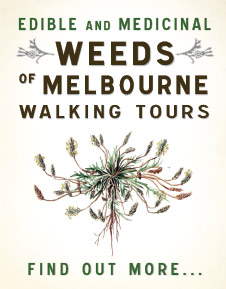
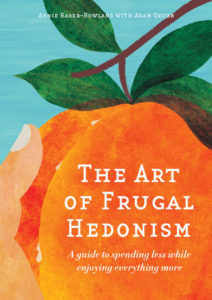
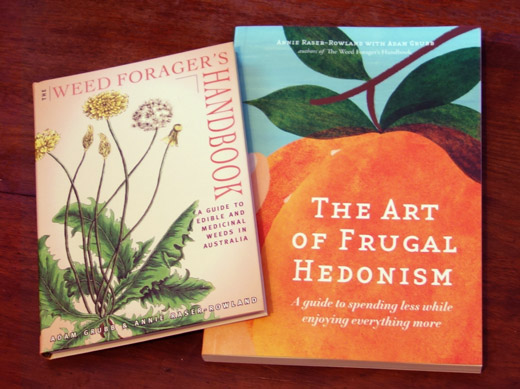
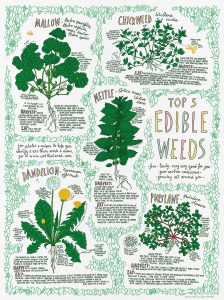
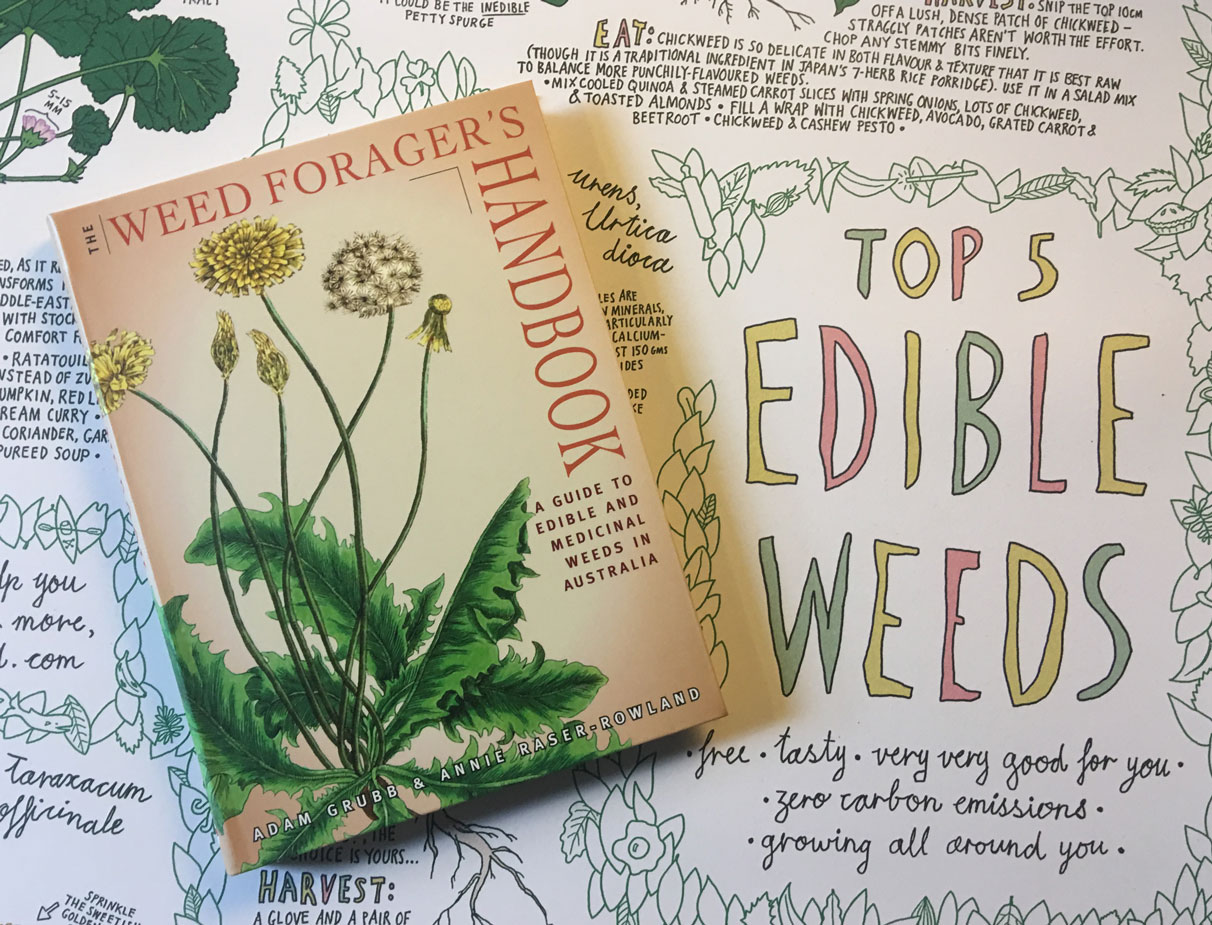
Recent Comments